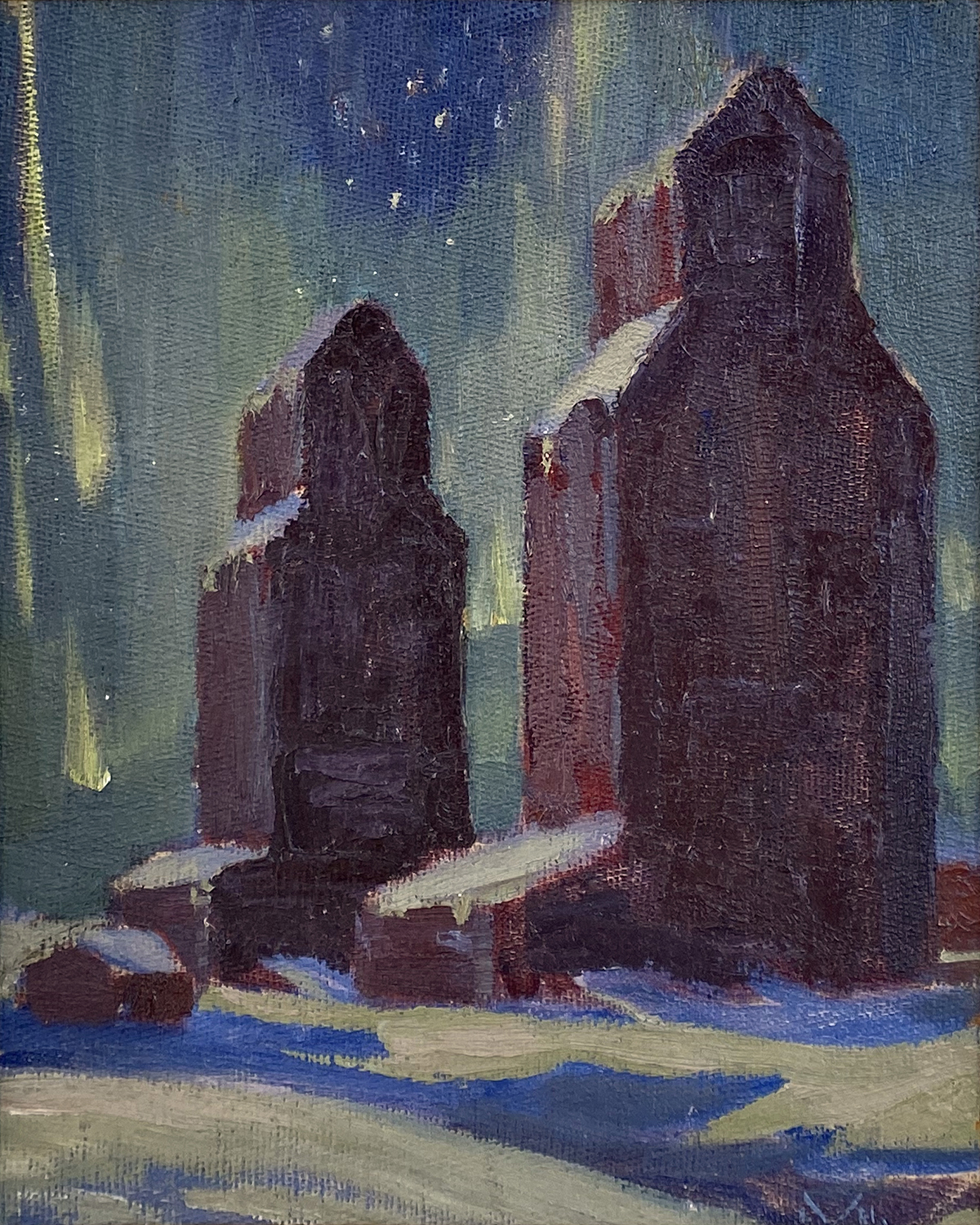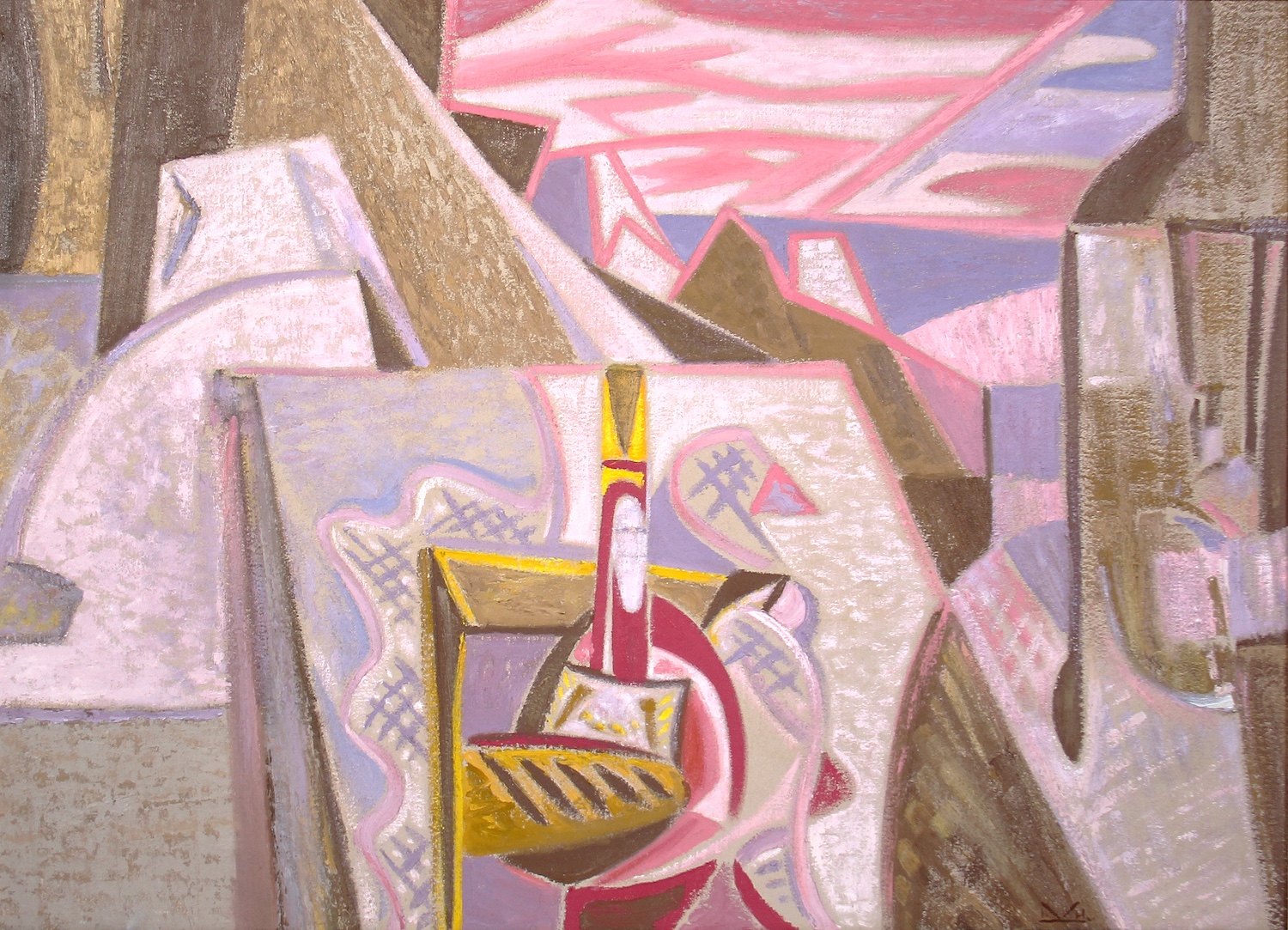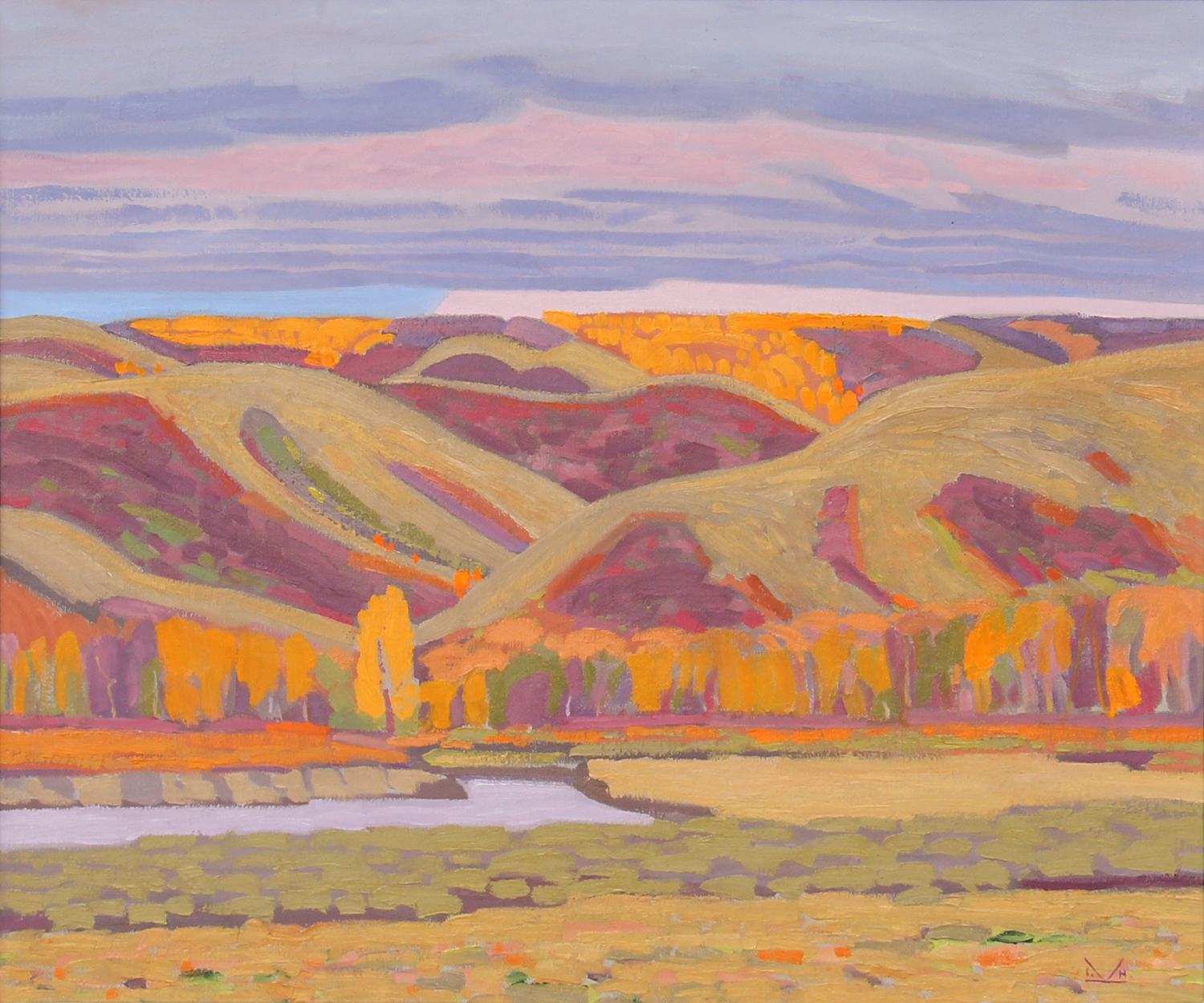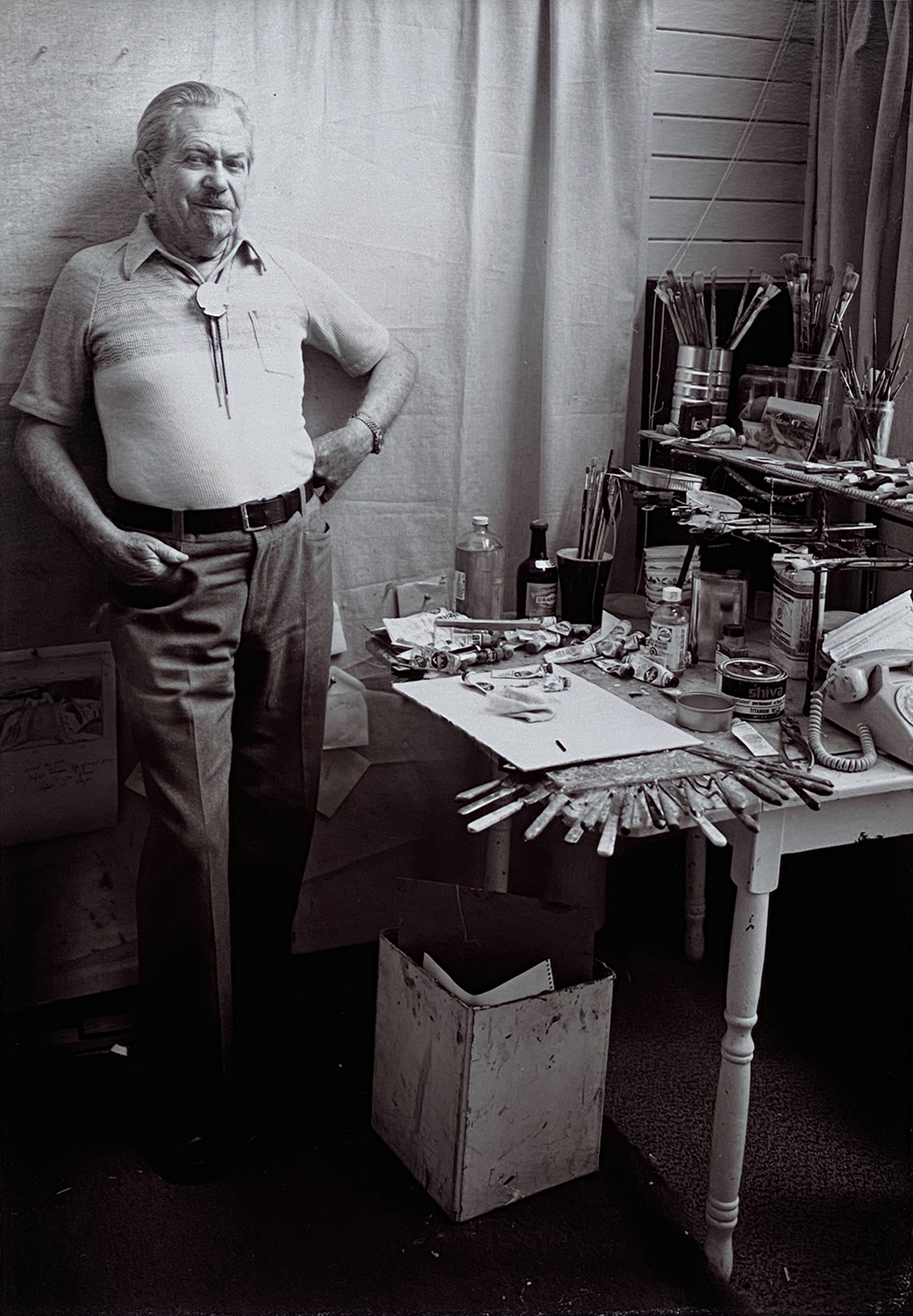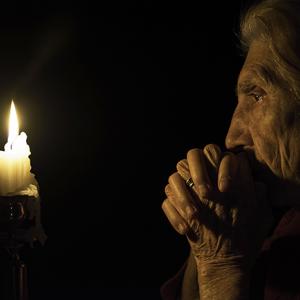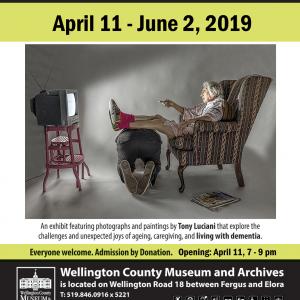Image of Illingworth 'Buck' Kerr, Alberta College of Art 60th Anniversary in 1986. Photo by Ken Flett, courtesy AUArts
By Eric Volmers
Calgary Herald, published February 6, 2025
When Illingworth Kerr was attending the Ontario College of Art in the 1920s, one his instructors made some disparaging marks about his home. This wasn’t just any instructor. It was Arthur Lismer, a landscape artist of some renown and a member of the Group of Seven. As a teacher, Lismer had certainly given Kerr some sound advice. He once told the young painter to “look for the design in nature” when Kerr asked about the Group of Seven style.
But Lismer and others in the Group of Seven who taught Kerr in Toronto – including J.E.H. MacDonald and Frederick Varley – had “written off the Prairies” when it came to finding inspiration in nature, says Mary-Beth Laviolette, an arts writer and curator of Through Brush & Spirit: The Legacy of Illingworth “Buck” Kerr at the Loch Gallery. This did not sit well with Kerr, who was born and raised in Lumsden, Sask.
“Arthur Lismer makes this famous comment in a class that Kerr is in: ‘Well, we didn’t go to the Prairies because there is nothing really interesting to paint there except maybe telephone poles,’ ” she says. “That absolutely outraged Kerr because he knew in his heart that – the mood, the colour of the sky, the landscape itself – there was a lot to be explored and interpreted.”
Illingworth Kerr’s Prairie Nocturne, 1926, oil on canvas board
Kerr, who died in 1989, is certainly a familiar name for many Calgarians. There is a gallery named after him at the Alberta University of the Arts, a tribute to the 20 years he was head of the school from 1947 to 1967. After attending the Ontario College of Art, he returned to his hometown and tried his best to make a living from art. He had a home studio above a pool hall. He tried to make a living from his art but often had to take on jobs painting signs or on a farm crew during harvest. He also ran traplines. In the 1930s, he left Canada and lived in Britain for several years. There were stints in Montreal and Vancouver, where he began to teach. In 1947, he came to Calgary to head up the art department of The Tech, which is now known as SAIT. It was during his tenure that the art department split from The Tech to become the Alberta College of Art (it has since been renamed the Alberta University of the Arts).
“He was the one who really gave some structure to the college, got some very good people to teach like Luke Lindoe and he made it into an art college,” Laviolette says. “It was an art college that was very successful in terms of the number of artists who came out and ended up developing national reputations. You have to give him a lot of credit for that. He was at that job for 20 years.”
But Laviolette said his lasting legacy as a landscape painter is linked to his devotion to home. Like the Group of Seven, Kerr’s guiding principle was to know and celebrate his country. Unlike them, much of his work was dedicated to the diverse landscapes of southern Alberta and Saskatchewan.
Through Brush & Spirit, which runs at the Loch Gallery until Feb. 22, features work dating back to the 1920s. But its focus is on Kerr’s most productive period in the 1970s and 1980s. This was after he retired from the Alberta College of Art. With his eyesight starting to fade, Kerr dedicated himself fully to his artwork.
Illingworth Kerr’s Bread and Wine, circa 1950, oil on canvas
“He was finally able to devote himself full-time to painting,” Laviolette says. “By that time, in the 1970s, he would have been in his 70s, he is finally making some money, too. He is finally able to sell his art. So it was an important decade for him.”
Made up of pieces from the Calgary-based Terra Capital collection and pieces on loan from private collections across Alberta, the exhibition is not a retrospective. But there are a few earlier pieces that help trace Kerr’s evolution. Prairie Nocturne was painted while he was still in school in 1926 and showcases the influence of Lawren Harris. Bread and Wine, from 1950, is another departure that suggests he was inspired by Picasso.
But after his retirement, his muse seemed to be the Alberta and Saskatchewan landscapes. The exhibit includes pieces such as 1974’s acrylic on linen Prairie Towers and 1976’s Grey Day, Mid-September, Qu’Appelle Valley.
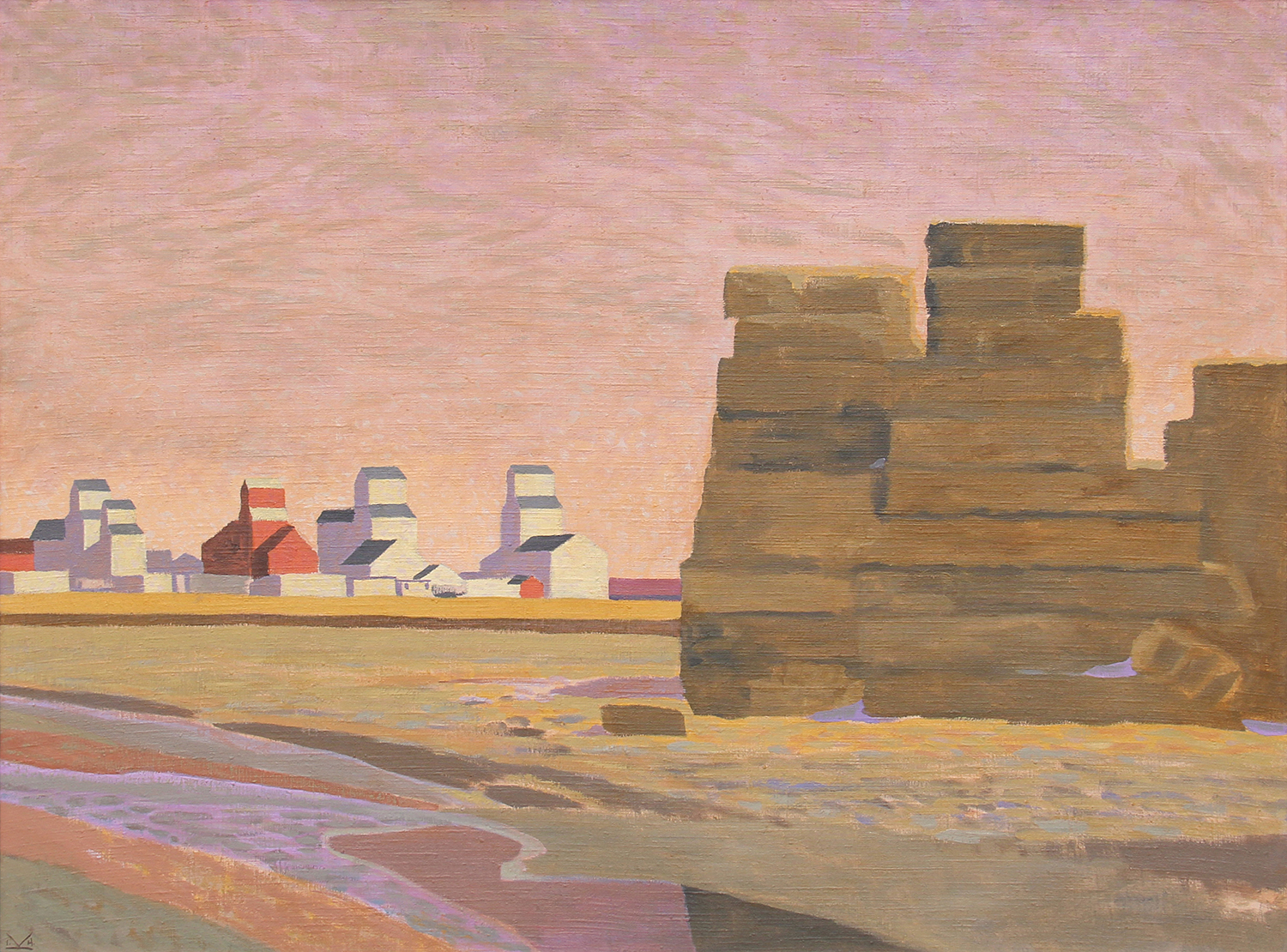
Illingworth Kerr’s Prairie Towers, 1974, acrylic on linen
As he got older, he continued to have problems with his eyesight. Laviolette says his time making signs in the 1920s strained his eyes. Taking care of his traplines during the 1930s also impacted his eyesight.
“Sandstorms, and whatever, did a lot of damage to his eyes,” she says. “He had conjunctivitis all his life. He eventually lost a lot of his eyesight by the end of his life.”
Nevertheless, his post-retirement saw him “bust loose” in terms of productivity and creativity, Laviolette says.
Illingworth Kerr’s Grey Day, Mid-September, Qu’Appelle Valley, circa 1976, oil on linen
A few years before his death, there was a retrospective exhibit of Kerr’s artwork in Edmonton. But while Calgarians certainly know his name, seeing an exhibit dedicated to Kerr’s work is a rarity, she says.
“You might see an Illingworth Kerr at an exhibition or you might see Kerr come up in auction, but to actually have a collection of his work is very, very rare,” she says.
One of the pieces on display at the Loch Gallery is a 1983 black-and-white photograph by Harry Palmer. Laviolette says it shows the artist’s spirit as a true westerner. “He is wearing that bolo tie,” she says. “I’m pretty sure on his feet, he probably had cowboy boots on, too.”
Through Brush & Spirit: The Legacy of Illingworth “Buck” Kerr will be at the Loch Gallery until Feb. 22.
Harry Palmer’s Illingworth Kerr, Print #2, 1983, photograph on paper, 8.75″ x 6″

